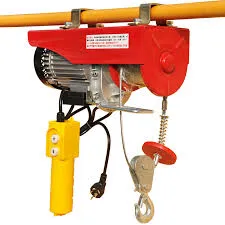


Safety Protective Equipment A Crucial Element in Workplace Safety
In today's fast-paced and often hazardous work environments, safety protective equipment (PPE) has become an essential component for ensuring the health and safety of employees. From construction sites to laboratories and manufacturing plants, the use of appropriate PPE can significantly reduce the risk of injury and illness. This article explores the importance of safety protective equipment, the types available, and the role it plays in promoting a culture of safety in the workplace.
First and foremost, the primary purpose of safety protective equipment is to shield workers from potential hazards that they may encounter on the job. These hazards can range from physical risks, such as falling objects or machinery injuries, to chemical exposures, biological threats, and even ergonomic challenges. By using PPE, employers demonstrate their commitment to safeguarding their employees and fulfilling their legal obligations under health and safety regulations. When workers feel protected, they are more likely to perform their duties effectively, which can enhance overall productivity and morale.
There are several categories of safety protective equipment that every workplace should consider based on the specific risks associated with their operations
. Personal protective equipment can be broadly classified into the following categories1. Head Protection Hard hats or helmets are essential in environments where there is a risk of falling objects. They also protect against electrical hazards in certain work settings.
2. Eye and Face Protection Safety goggles and face shields are crucial for workers exposed to flying debris, splashes from hazardous substances, or intense light. Ensuring clear vision while safeguarding the face is key to maintaining safety in numerous industries.
3. Hearing Protection In workplaces where noise levels exceed recommended limits, workers should use earplugs or earmuffs to prevent hearing loss. Prolonged exposure to loud noises can lead to permanent damage, making these protective measures vital.

4. Respiratory Protection Masks and respirators are necessary when employees are exposed to harmful dust, vapors, or fumes. Proper fitting and training are crucial to ensure these devices offer adequate protection.
5. Hand and Arm Protection Gloves are one of the most commonly used forms of PPE. Depending on the nature of the work, they can protect against cuts, chemicals, and thermal hazards. Employers must ensure that their staff wears gloves suited for the specific tasks at hand.
6. Foot Protection Safety footwear—such as steel-toed boots—protects workers from heavy or sharp objects that might cause injury. Slip-resistant soles are also essential in preventing falls in wet or oily environments.
7. Body Protection Depending on the environment, workers might need additional protective gear, such as aprons or full body suits, especially in environments where chemicals are handled or where there is the risk of physical contact with hazardous materials.
Implementing the use of PPE must be accompanied by adequate training. Workers should understand the importance of wearing protective equipment, how to properly use it, and the limitations of each type of gear. Regular drills and safety meetings can help reinforce the significance of PPE in the workplace.
Moreover, fostering a culture of safety is vital for encouraging compliance with safety protocols. Employers should lead by example, consistently reminding their workforce of the importance of PPE. When management prioritizes safety, it sets a precedent and encourages workers to take their own safety seriously.
In conclusion, safety protective equipment is an indispensable aspect of workplace safety. By identifying hazards, selecting the appropriate PPE, and fostering a culture of safety, employers can protect their most valuable asset—their employees. As the saying goes, It’s better to be safe than sorry, and investing in safety protective equipment is a crucial step in creating a secure working environment for everyone.



